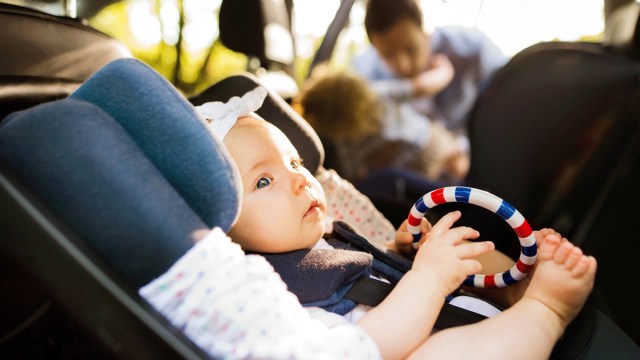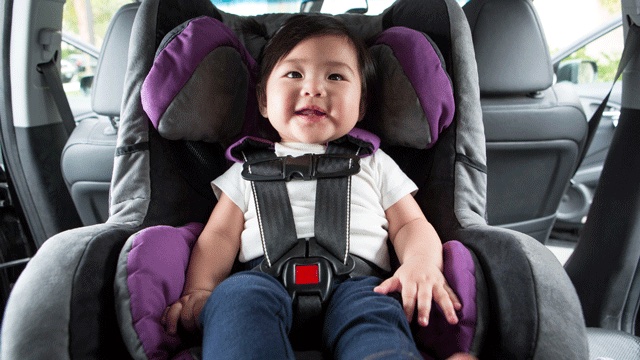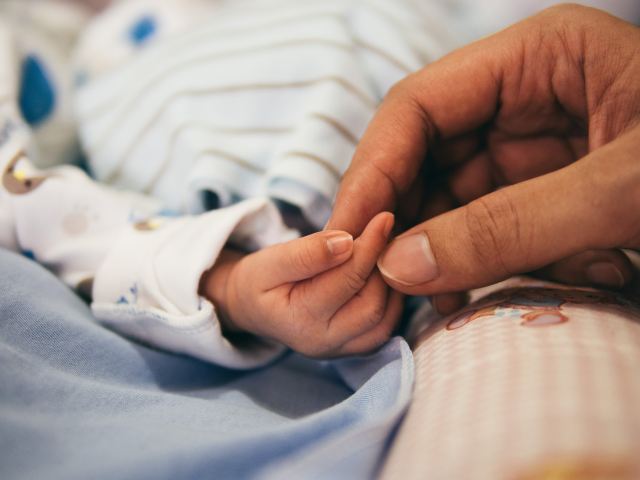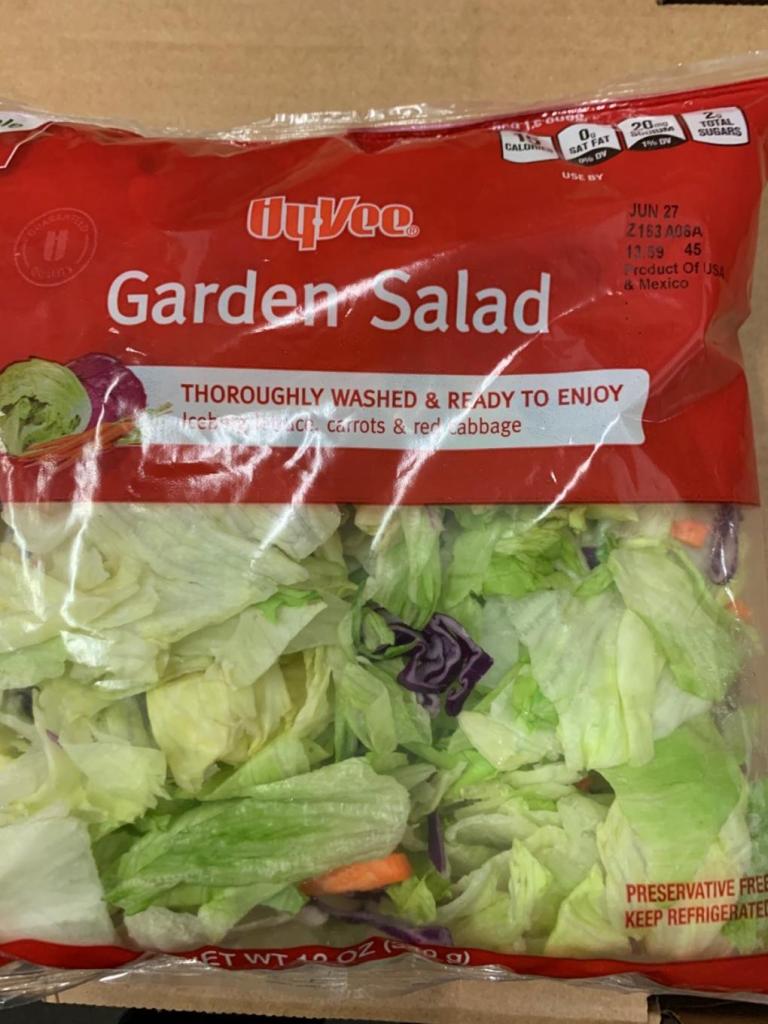Should you intervene or not?
As parents of newborns, we take our cues from the noises our babies make. Grunts, whimpers, and full-on cries are ways our little ones communicate their needs. And while sometimes those wails and cackles are easy to understand, there are other moments when it would be so nice if our baby came with an operating manual—like when they cry in their sleep. Watching your infant cry when it looks like they’re still asleep can be confusing: what, exactly, are you supposed to do to support your baby having a good night’s sleep? We turned to two experts to find out.
Dr. Jennifer Selegeon, a practicing pediatrician for 20 years and clinical advisor to the digital pediatric platform ParentMD, says, “One of the most important things we can do for our overall health is learning good sleep hygiene. This starts during infancy.” She explains sleep is important for our development, our mental health, our immune system, and our body systems.
Co-founder of Sleepy Planet Parenting, Jennifer Waldburger, MSW, concurs, explaining that proper shut-eye helps babies thrive on every level: physically, neurologically, and socially. That’s why her company’s mission is to help children “learn good sleep skills with a minimum of tears.”
So now that we’ve met our guides, let’s dig into exactly why babies cry in their sleep and suggestions for what to do when you hear those midnight calls.
1. Your baby is moving into a different phase of sleep.
You’re feeling ready for the different phases your baby will go through during infancy, but how about the different sleep phases? Young babies experience two cycles of sleep: active sleep and quiet sleep. During active sleep (or REM sleep), your baby may dream, their eyes might move rapidly back and forth, or they might make the cutest of noises that you should definitely record to share with the grandparents on Tinybeans. During quiet sleep, your baby sleeps deeply, but it’s during these transitions that crying may occur, Waldburger explains.
“Because the cycles repeat every 45-50 minutes, that means baby is shifting from quiet to active sleep often throughout the night,” Waldburger begins, “so it’s not uncommon to hear baby whimpering throughout the night—this is nothing to worry about.” Dr. Segeleon says babies will often cry in their sleep, and this does not always mean that something is wrong. “Crying during sleep can be perfectly normal, and newborns start off with short sleep cycles and can wake frequently.”
To determine if your baby is crying because of shifting sleep cycles, check to see if their eyes are still closed and listen to your little one’s cries. “What’s more common in some younger babies is an occasional light whimper while keeping their eyes closed. This usually means that baby is shifting from one sleep cycle to the next,” Waldburger says.
2. Your baby is hungry.
Waldburger says if your little one’s cry is louder than a whimper, consider whether or not your baby could be hungry. The Centers for Disease Control and Prevention (CDC) says that most babies need to eat every 2 to 4 hours. This means that your little one may wake up feeling a little “hangry” several times during the night.
A good rule when trying to decide if your baby’s sleepy cry is due to hunger and should be addressed is to wait and see if your little one continues to cry or is able to settle down quickly. If your infant’s belly is feeling empty, it’ll be tough for them to fall back asleep without this need being met. Waldburger says a louder cry usually means that the baby is awake (or almost awake), even if their eyes are still closed. That’s when it’s time to check your schedule and prep for a feeding session.
3. Your baby is teething.
The drool, the crankiness, and the gnawing on your shirt collar have begun—your baby is teething. Babies start teething around 4 to 8 months of age, per the Children’s Hospital of Los Angeles. This lasts until 30-36 months when that last set of molars appears. Some symptoms of your baby teething are loss of appetite, ear rubbing, and yup, you guessed it… sleep disruptions. Dr. Segeleon reassures that teething can trigger crying during sleep, and Waldburger adds when it comes to teething, we differentiate between ongoing/chronic teething and active teething.
“In chronic teething, there can be some movement of teeth with small spikes of pain or discomfort,” she says. She goes on to explain that this kind of teething could lead to lighter crying, and there isn’t anything you need to do here. In active teething, however, when a tooth is breaking through the gum, this pain can cause your child to cry more intensely. During this type of crying, your kiddo’s eyes will more than likely be open (and they’ll be awake), so Waldburger suggests going to your baby right away to offer comfort, milk, or a pain reliever if your pediatrician has recommended that and guided you on the dosage.
4. Your baby is in a sleep regression.
Your baby was such a good sleeper that you were almost too embarrassed to tell your mom friends. Now, out of the blue, your super-sleeper is waking up and crying more often than you reheat your morning coffee. Sleep regression can be triggered when your infant reaches new milestones or when your baby’s sleep patterns change, according to the Cleveland Clinic. Crying and fussing while sleeping during a sleep regression is common, and it can be hard to tell if baby needs your comfort or needs space to self-soothe.
“Crying during sleep when nothing is really wrong should be short and is typically more of a whimper or brief crying out,” Dr. Selegeon says. As long as you know that the baby’s needs are met, you can wait a few minutes or more to see if they’re able to settle themselves without any intervention. Dr. Selegeon says that if the crying is sustained, or if it sounds like your baby may be in distress, it’s alright to check on them. If you’re still not sure how to handle your baby’s sleepy cries during a sleep regression, Penn Medicine suggests talking with your pediatrician to decide whether or not your baby is old enough to learn how to self-soothe to fall back to sleep on their own or if they still need your comfort when falling asleep.
5. Your baby is overtired or overstimulated.
When your baby crosses over into the world of The Overtired, it can feel like you’re in a weird world of your own. Schedule changes, long periods without power naps, or being overstimulated can all contribute to this state, and you might hear some sleep-crying from your infant even though their eyes are shut tight and you believe them to be asleep. “Sometimes overtired babies are more likely to cry a bit in their sleep,” Waldburger says.
Since overtiredness (and overstimulation) can both cause your baby to cry in their sleep, do your best to intervene early. “Try to get baby down for sleep 10 to 15 minutes before you typically see red eyes, yawning, and fussy behavior—all of which are actually cues that baby is already overtired,” Waldburger says.
What should you do when your baby cries in their sleep?
Hearing your baby whimper, cry, or softly moan while sleeping can be unsettling. As parents, we can struggle with how best to comfort and support our babies. Dr. Segeleon says if you hear your baby crying in their sleep to first take a pause and see if your baby can settle themselves before you rush in and disturb their sleep pattern. “Listen for signs of true distress, because you’ll learn to differentiate your baby’s cries and needs with time and experience,” she assures. You can also double-check the room temperature, make sure your baby’s swaddle is still, well… swaddled, or confirm your little one isn’t gassy.
Waldburger reminds parents that if the baby is lightly whimpering and still asleep, there’s absolutely nothing you need to do. “Sometimes trying to comfort a baby in this case will wake them all the way up—making it harder for them to return to sleep.” If your baby’s needs have been met and they still continue crying lightly for 5 to 10 minutes, try placing a hand on your baby’s tummy, use some very gentle motion, and offer a “shhh” or two.
It’s good for parenting peace of mind to know that most babies will outgrow this sleep-crying phase by the time they’re 4 to 5 months old. In the meantime, both experts say that if you have any questions or concerns about your little one crying in their sleep, contact your pediatrician for more advice.
























